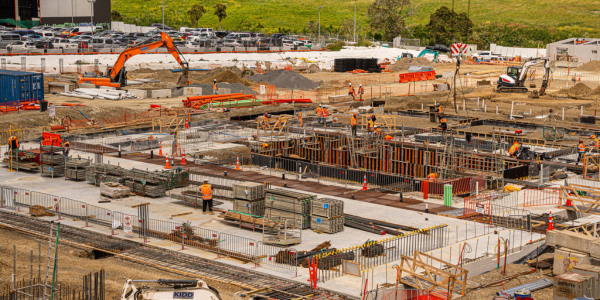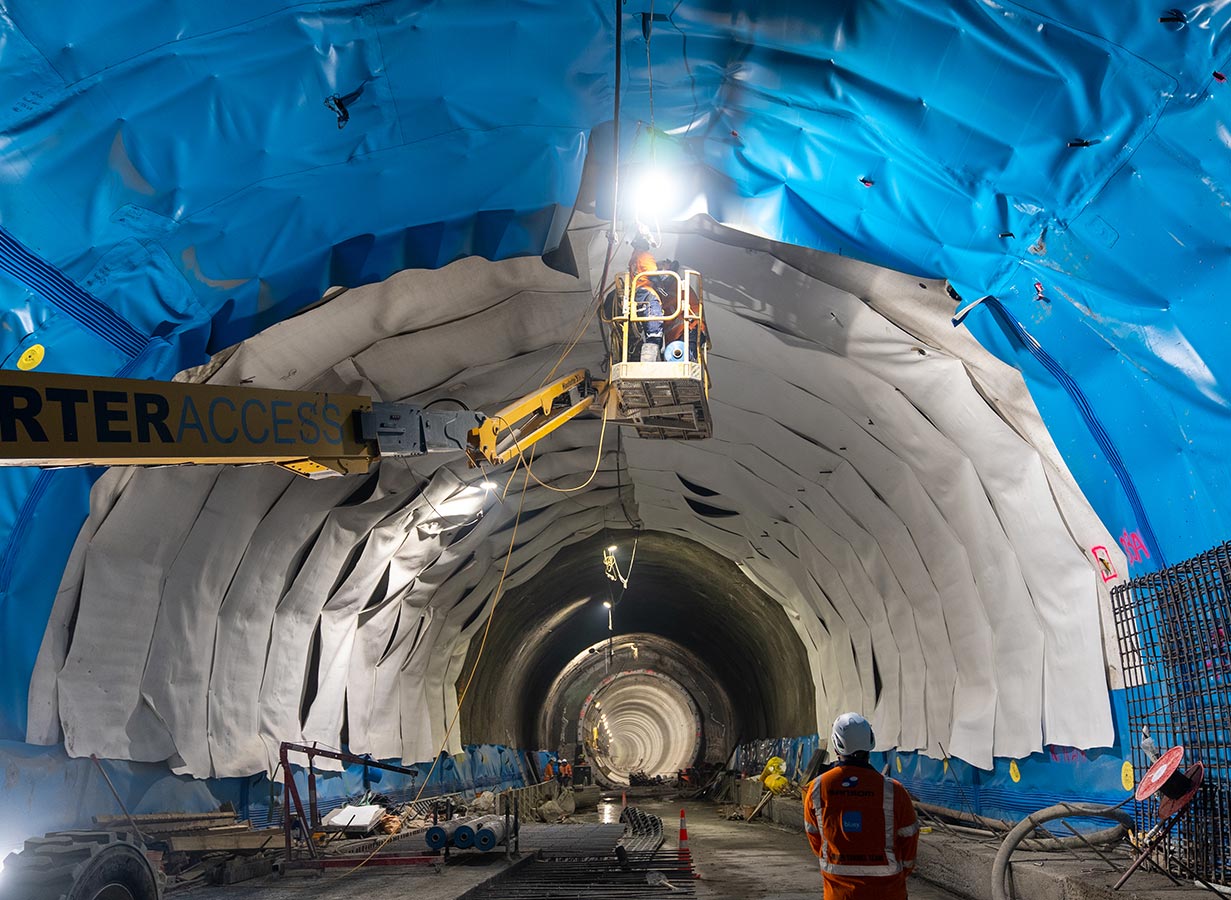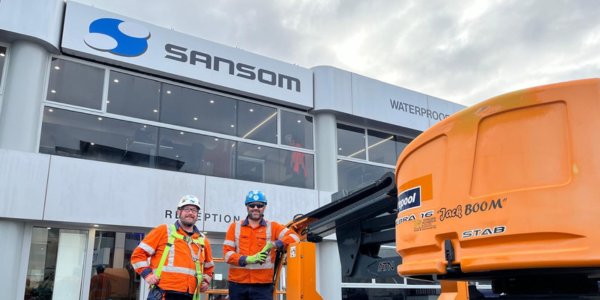With the recent weather events, there has been an increased spotlight on the impact of water on buildings.
Roofs, doors, windows, and gutters often come to mind when talking about water entering a property and causing damage. However, there is an even more important area that is overlooked because – quite literally – it is underground.
Building foundations, basements, car parks, lift pits, and storage areas can sit below ground, and poor waterproofing of these areas can cause anything from damage to goods to significantly impacting the structural integrity of the building.
This type of waterproofing is called tanking.
There are three types. Type A, also called barrier protection, is where a membrane is installed outside the below-ground structure to make the area watertight. Type B, structurally integral protection, is included in the concrete’s specification, pouring and the structural design of the building. Type C, drained protection, is a solution that uses a cavity drain system to manage water coming into the structure and remove it for drainage.
Type A is the most common form of tanking used in New Zealand and can be combined with the other types for increased protection against water ingress.
The problem is, that while tanking is a fundamental part of building a building, it isn’t given the attention it deserves based on its importance – anyone can walk into a hardware store, buy a membrane and install it, cutting costs by using a cheaper tanking solution will potentially cost dramatically more in the long run and, because it is underground and built over, problems can often only be managed, not fixed.
Anyone can buy and install a membrane
Surprisingly, unlike roofing, tanking is relatively unregulated and there is no requirement for applicators to be Licensed Building Practitioners (LBP).
Since some of the products are available at most major hardware stores, any person can purchase tanking membranes and install them, no questions asked.
Applying the membrane is a skilled job, and underground structures often come with complexity that needs experience to overcome and ensure that they’re watertight before the rest of the building is completed.
The issue is, there is no incentive for membrane tanking providers and retailers to not sell to everyone and anyone. After all, a sale is a sale.
A possible solution, like is done in some other countries, is to only allow membrane providers to sell to licensed applicators. This would at least make sure the right people are taking care of such an important part of the building.
Meaningless warranties
Another issue is the material warranty. Tanking membranes often come with 20 – 25 year warranties – which sounds great in theory.
However, in practice, it is almost impossible to claim on this warranty.
This is because what the material warranty actually means is that the membrane provider is warranting that there is nothing wrong with the product when it is sitting in their warehouse.
Once it is purchased and leaves the warehouse, what happens to it is out of their control and they aren’t liable.
Which brings us back to the applicator. If they aren’t qualified or experienced, it is entirely possible that they install the tanking membrane incorrectly or even damage it.
So, if you do find out you have water leaking into the below-ground areas of your building – the material warranty won’t help, but neither will going back to the builder or the applicator. This is for the simple reason that you can’t prove who was at fault.
Everything is now underground and has been built over. Even if somehow you do work out where and what is causing the water ingress, was it the membrane (unlikely due to the manufacturers quality assurance processes), the applicator (could be if they aren’t qualified) or someone involved with the subsequent building works who accidentally damages the membrane?
You’ll never know the answer and it will be the building owner’s pocket that the cost of the remedial work will come from – and that’s not cheap.
Which does reinforce the importance of using an experienced, licensed applicator.
An additional solution is to have third-party pre-pour inspections of the installed membrane before any concrete is poured.
This should catch damage to the membrane and incorrect applications before it is too late.
It is an extra expense, but one that perhaps will prevent a fortune in remedial work.
A problem that can never be fixed
What really makes it critical to pick the right membrane and install it correctly is that issues and mistakes can never be fixed – only managed.
After all, as mentioned earlier, once the building has risen above ground, there is no easy way to access the tanking membrane again.
It’s a bit like trying to fix the hull of a boat when it’s already in the water.
The only complete option is ongoing remedial work to manage the water leaks and make sure any damage to what is stored underground is minimised.
And, this is disruptive, slow and expensive.
An example is a Central Auckland-based building, where the developer decided to use a cheaper material than what was recommended. In the short term, this saved them approximately $1 million. Unfortunately, as the material was not fit for purpose, it failed to keep the basement areas watertight. To date, the bill for the remedial work is over $5 million and counting.
To put it simply, it pays to select the right tanking membrane and have it applied well by experienced people.
Accountability
In summary, waterproofing the below-ground areas of a building is one of the few things that can’t be fixed once the tanking membrane has been installed and the building built over it.
Therefore, it has to be done right the first time. Otherwise, the building owner is potentially left with ongoing, expensive remedial bills.
Requiring tanking membrane providers to only sell to licensed applicators is a great start – making sure skilled people are carrying out the work. Even better still, requiring the tanking membrane suppliers to verify that the installation is installed to a warrantable standard would be better still.
The other possible solution is having a third-party pre-pour inspection to catch any issues before it is too late to do anything about them.
At Sansom, we’ve been in the industry for over 47 years, there is nothing our team hasn’t seen when it comes to tanking and we’ve developed what is likely to be the most comprehensive quality assurance process in the market.
And, we base everything we do on what’s the right thing to do for the design life of the structure.
So, get in touch to start the conversation: sansom.co.nz/contact-us/




